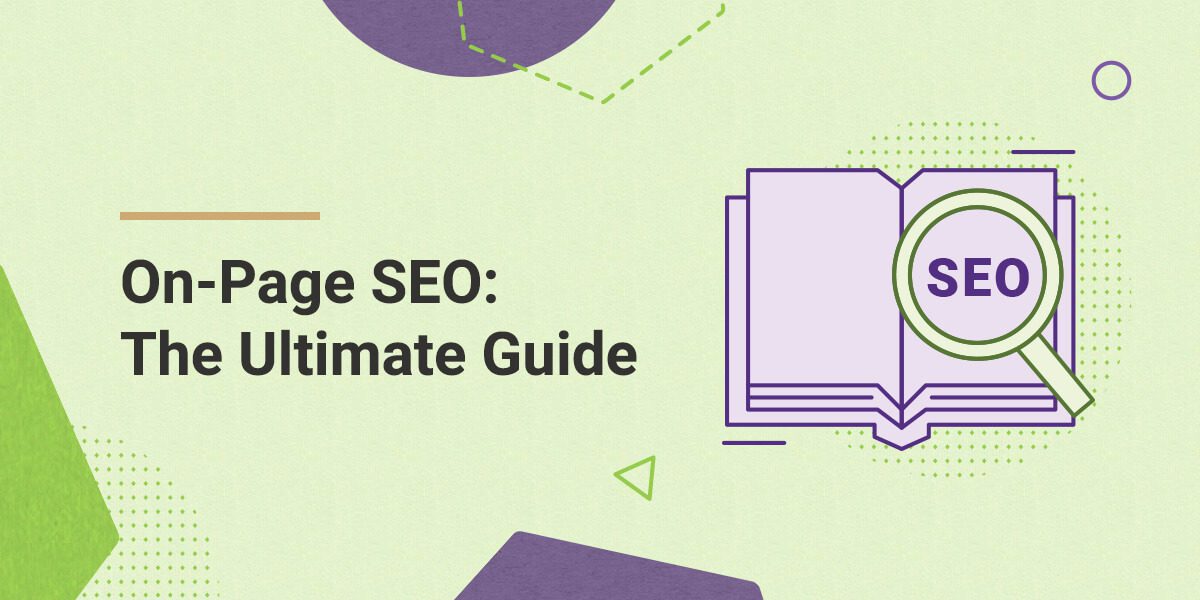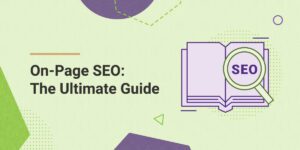
Complete Guide to On-Page SEO
Complete Guide to On-page SEO (Search Engine Optimization) is a vital aspect of creating a digital footprint that stands out in the crowded sphere of search engine rankings. Its main objective is to design web pages in a way that enhances their visibility in search engine results, thereby increasing traffic and boosting the website’s overall performance. This comprehensive guide will delve into the importance of On-page SEO and how you can make the most of it to take your website to the next level.
What Is On-Page SEO?
On-Page SEO refers to the practice of optimizing individual web pages to rank higher and attract more relevant traffic in search engines. It relates to both the content of individual pages and the HTML source code. In essence, it includes all the measures taken directly within the website to improve its position in search rankings. On-Page SEO involves optimizing elements such as headlines, HTML tags (title, meta, and header), and images, as well as ensuring that a website has a high level of expertise, authoritativeness, and trustworthiness.
Importance of On-Page SEO
SEO is a critical component of business strategy as it directly enhances online visibility, audience reach, and search engine ranking. The importance of On-Page SEO lies in its direct influence over these factors. It helps search engines understand your website and its content, as well as identify their relevance to search queries. Moreover, it furnishes a cornerstone for any successful SEO strategy.
Key On-Page SEO Factors
There are several key elements to On-page SEO, each playing a vital role in website performance. Below are some essential components:
1. Title Tags: The title tag represents an HTML tag that exists in the head section of each web page. It provides an initial cue or context about what the topical subject matter is of the respective page.
2. Meta Descriptions: They provide descriptive summaries about the page’s content that appear below the title tag in search engine results. While it doesn’t directly influence rankings, it can significantly impact page click-through rates.
3. Headers and Body Text: Headers and body text should be rich in keywords related to the topic. The header tags (H1, H2, H3, etc.), particularly the H1, often contain the main keywords for which that page is trying to rank.
4. Internal and External Links: Including relevant internal and external links within your content can help increase a website’s visibility, credibility, and rankings.
5. Image Optimization: Images on your website are another valuable asset that can be optimized for better search engine rankings.Furthermore, Using relevant file names, alt text, and reducing file sizes for faster loading are some practices for image optimization.
6. Keyword Usage and Optimization: Place relevant keywords throughout your content including title tags, headings, the main body, URLs, and meta descriptions.
7. URL Structure: URLs should be SEO friendly, clear, concise, and include primary keywords to be most effective.
8. User Experience: The website interface should be user-friendly, with easier navigation, quick load times, and mobile optimization.
How to Execute an Effective On-page SEO Strategy
Having covered the basics, now let’s delve into how to create and execute an effective On-page SEO strategy.
1. Keyword Research: To begin, identify relevant keywords related to your business and content. You can use several keyword research tools available online, such as Google Keyword Planner, Ahrefs, and SEMrush. Aim for specificity, target long-tail keywords that your audience is searching for.
2. Optimize Title Tags and Meta Descriptions: Write clear, engaging title tags and meta descriptions that include your target keywords. These provide users and search engines with an overview of the page’s content and should therefore be compelling and accurate.
3. Optimize Your Content: It’s not enough just to have keywords. Ensure you have quality, informative, and original content. Content should provide valuable information and solve problems for readers whilst naturally incorporating the targeted keywords.
4. Optimize Your Images: Utilize your alt text and file names to incorporate keywords and give search engines more context about the content of your images.
5. Improve User Experience: Make sure your site is easy to navigate and loads quickly. A mobile-friendly design is crucial, as a large majority of searches are now conducted on mobile devices.
6. Monitor and Adjust: Use tools like Google Analytics to monitor your site’s performance. See what is working, what’s not, and make necessary adjustments. SEO is a continuous process and constant monitoring and modification is key for success.
On-Page SEO Checklist
Now that we understand the importance of On-Page SEO, let’s dive into the key elements that should be optimized on your website:
1. Keyword Research
Before you start optimizing your web pages, thorough keyword research is essential. Identify relevant keywords and phrases that your target audience is likely to search for.

2. High-Quality Content
Content is king in the digital world. Create informative, engaging, and valuable content that addresses the needs and interests of your audience. Ensure your content is well-structured with clear headings, subheadings, and bullet points.
3. Meta Titles and Descriptions
Craft compelling meta titles and descriptions that include your target keywords. Keep them concise and enticing, as they play a significant role in CTR.
4. Header Tags (H1, H2, H3, etc.)
Use header tags to structure your content logically. The H1 tag should represent the main topic, while H2 and H3 tags can be used for subtopics and subsections.
5. Image Optimization
Optimize images by compressing them for faster loading times and using descriptive alt text. This not only improves user experience but also helps search engines understand your content.
6. URL Structure
Keep your URLs short, descriptive, and keyword-rich. Avoid using generic URLs with numbers or random characters.
7. Internal and External Links
Include relevant internal links to other pages on your website to improve navigation and user engagement. Additionally, use external links to authoritative sources to provide credibility to your content.
8. Mobile Optimization
Ensure your website is mobile-friendly, as Google considers mobile-friendliness a ranking factor. Test your site’s mobile responsiveness using Google’s Mobile-Friendly Test.
9. Page Speed
Optimize your website’s loading speed by minimizing large images, leveraging browser caching, and using content delivery networks (CDNs).
10. User Experience (UX)
Enhance user experience by ensuring intuitive navigation, clear calls to action, and a clean design.
Lenawa Solutions: Your On-Page SEO Partner
At Lenawa Solutions, we specialize in providing comprehensive On-Page SEO services tailored to your business needs. Our expert team understands the ever-changing landscape of SEO and will work closely with you to implement the best practices mentioned in this guide.
By partnering with us, you can unlock the full potential of On-Page SEO and elevate your online presence, attracting more organic traffic and boosting your business’s success.
Conclusion
The ever-evolving digital world necessitates effective SEO strategies to give your online presence the boost it requires. Implementing an extensive On-page SEO strategy is no longer an option, but a necessity for businesses to thrive in the digital economies. By comprehending this guide, and with careful execution and regular monitoring, climbing the ladder in search engine rankings has never been more achievable.
Remember, while SEO is a critical factor in your website’s visibility, it’s essential for it to go hand in hand with good quality content. Crafting well-researched, high-quality content that is valuable to your visitors, while keeping SEO practices in mind, is the recipe for your website’s success.

